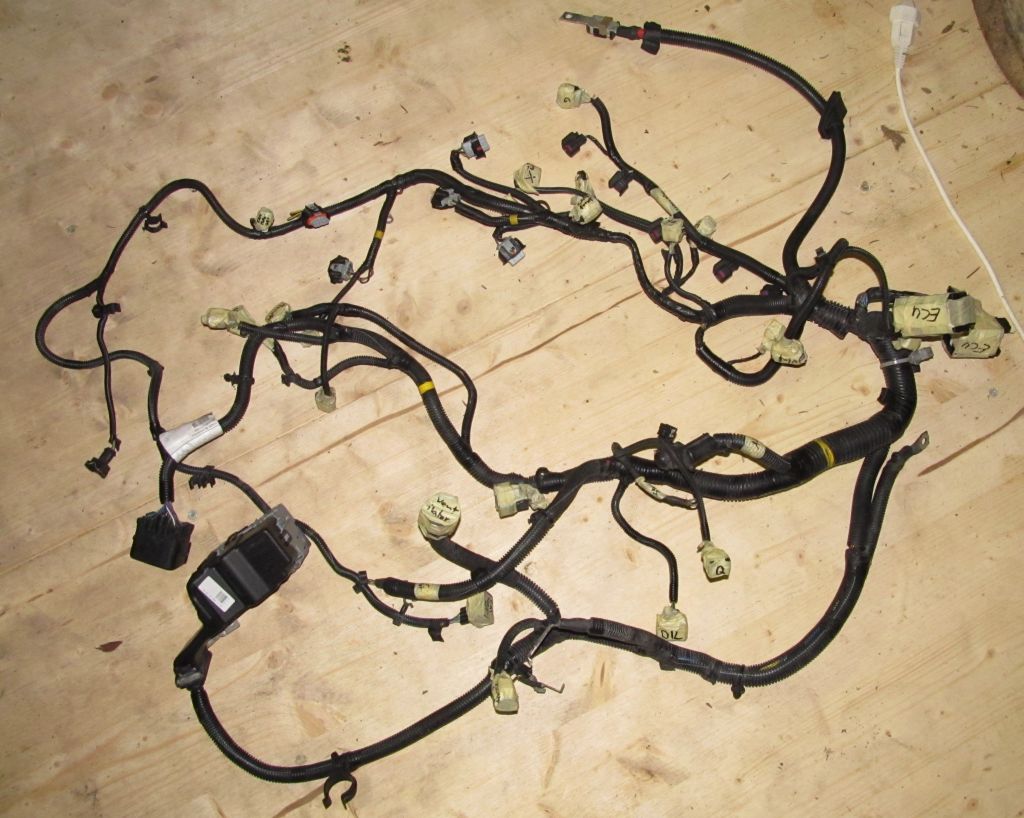 After about 5 evenings/nights (5x 4-5h) spent in solitude with the S80 I convinced her (and myself) that it's about time to pull the tooth that was already loose for several weeks:
After about 5 evenings/nights (5x 4-5h) spent in solitude with the S80 I convinced her (and myself) that it's about time to pull the tooth that was already loose for several weeks:- The coolant and the transmission oil was removed
- The engine cable tree had to go out
- All tubes were removed, incl. the hydraulic line of the clutch
- Gear shifter was removed from transmission
- Gas lines removed
- Gas tank was removed - that was an adventure in itself


Gas tank
The tank was held in place by two brackets. At 23:00 in the night no one could be called for support, so I had to do it on my own or wait. Well, who am I to give up at 23:00 already? So, first remove the left bracket and then hold the tank in place with one hand. There were still about 8 Liters of gasoline in it. By lowering the lift a bit, I was able to use not only one hand to support the tank but also my head. Knowing that there might be some wires and tubes still attached on the upper side of the tank and that I won't be able to go to the workbench to get some tools, I stuffed all I could possibly need into my pant pockets beforehand: several sizes of screwdrivers, knife, pliers. While still holding the tank in place, I removed the second bracket. As soon as it was gone, a hideous balancing act started with the gasoline wavering around, continuously shifting the center of gravity. By various acts of gravity defiance, I managed to remove 2 plugs and one tube and then the tank was free.

Engine
A friendly shop owner in our little town lent me his motor lift. The removal went fairly well. The motor got stuck one time because the transmission hung a bit low. The lift didn't go as high as it should have. So alike to the gas tank removal, I had to use two hands to lift the sagging transmission high enough to get it over the front of the car and one foot to get the motor lift moving backwards. Looked and felt criminal but it worked :)
 Transmission
TransmissionRemoving the transmission from the engine was a quick jobs: 10 screws, a few strong pulls and it was separated. But looking at the service manual on how to remove the clutch was a bit a downer. Because it's a self-adjusting clutch you have to use a special tool to relieve the tension of the springs to remove it from the engine and mount it again. Well, just another obstacle. I'd appreciate any hint on where to get this (and keep it for several weeks)
 I'm already giving a possible mounting frame some thoughts. I'll have to gather some know-how on how to support the rear end of the motor, how to support the right driving shaft and how to counter torsion forces when accelerating or using regen. The support for the driving shaft has to be fixed with the motor/transmission assembly. Any change in the angle between the transmission and the support of the long shaft has to be avoided.
I'm already giving a possible mounting frame some thoughts. I'll have to gather some know-how on how to support the rear end of the motor, how to support the right driving shaft and how to counter torsion forces when accelerating or using regen. The support for the driving shaft has to be fixed with the motor/transmission assembly. Any change in the angle between the transmission and the support of the long shaft has to be avoided.  Shopping
ShoppingI dared to do some more shopping: a 300€ can-usb interface from peak systems in Germany - apparently the only way to configure the Brusa components and to do some first tests (and protocol sniffing). And a 100€ 12V Bosch water pump as it's not advisable to operate the water-cooled Brusa components without any coolant circulation.
What else is missing? Some tools to crimp wires (12V and HV) and of course the car grade 12V and HV cables. I'd like to buy some HV cables but don't know how much yet. Would I just cut long pieces for first tests which I could re-use and shorten on one end for the final build?
GEVCU
The motor controller for the Brusa DMC5 is under way. It's ready to receive some status messages and log them to the console. For further development I need to do some tests with the real thing. That's why I bought the USB-CAN adapter from Peak-systems.com. I'd say it's about 20% done..





































